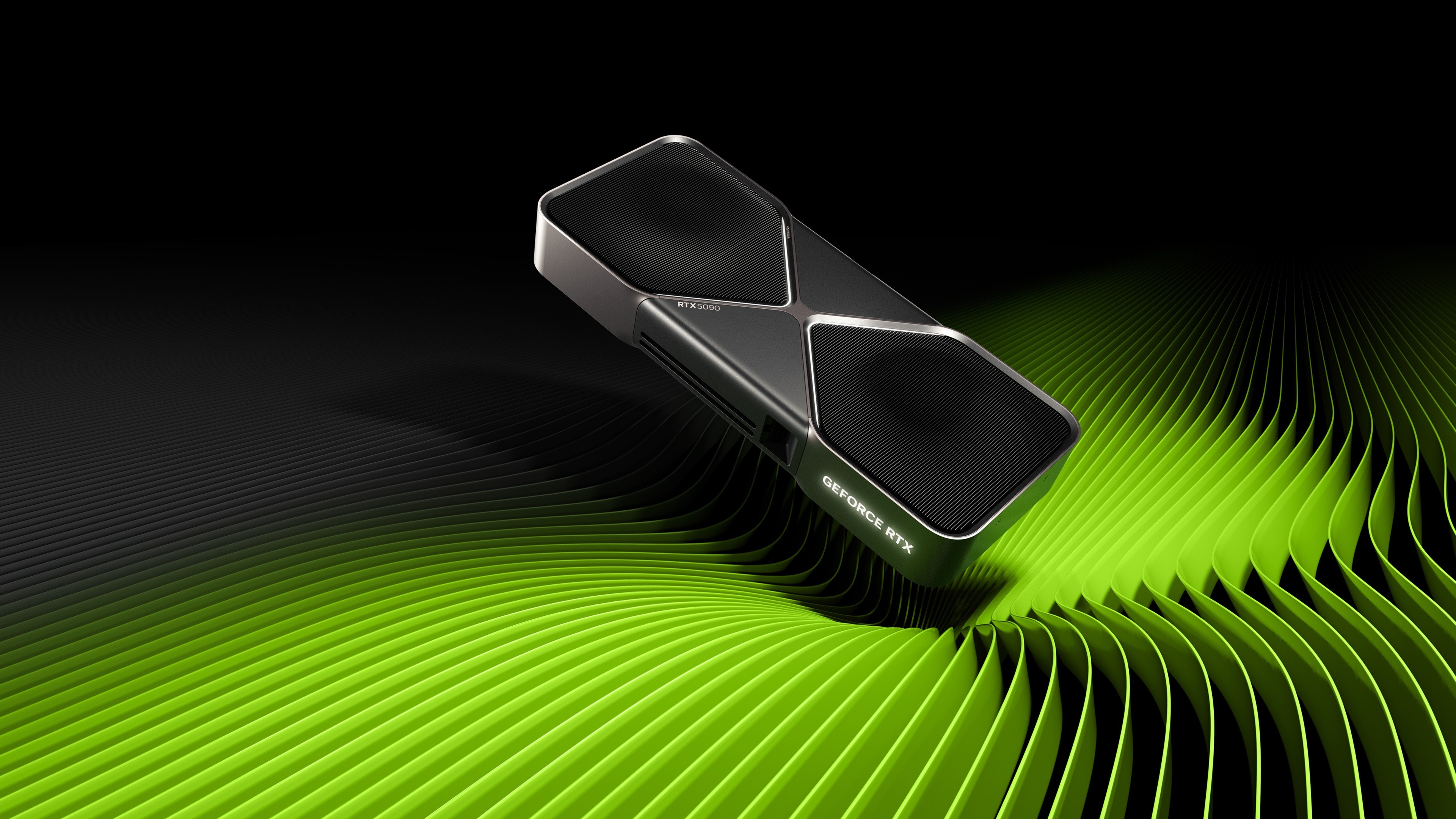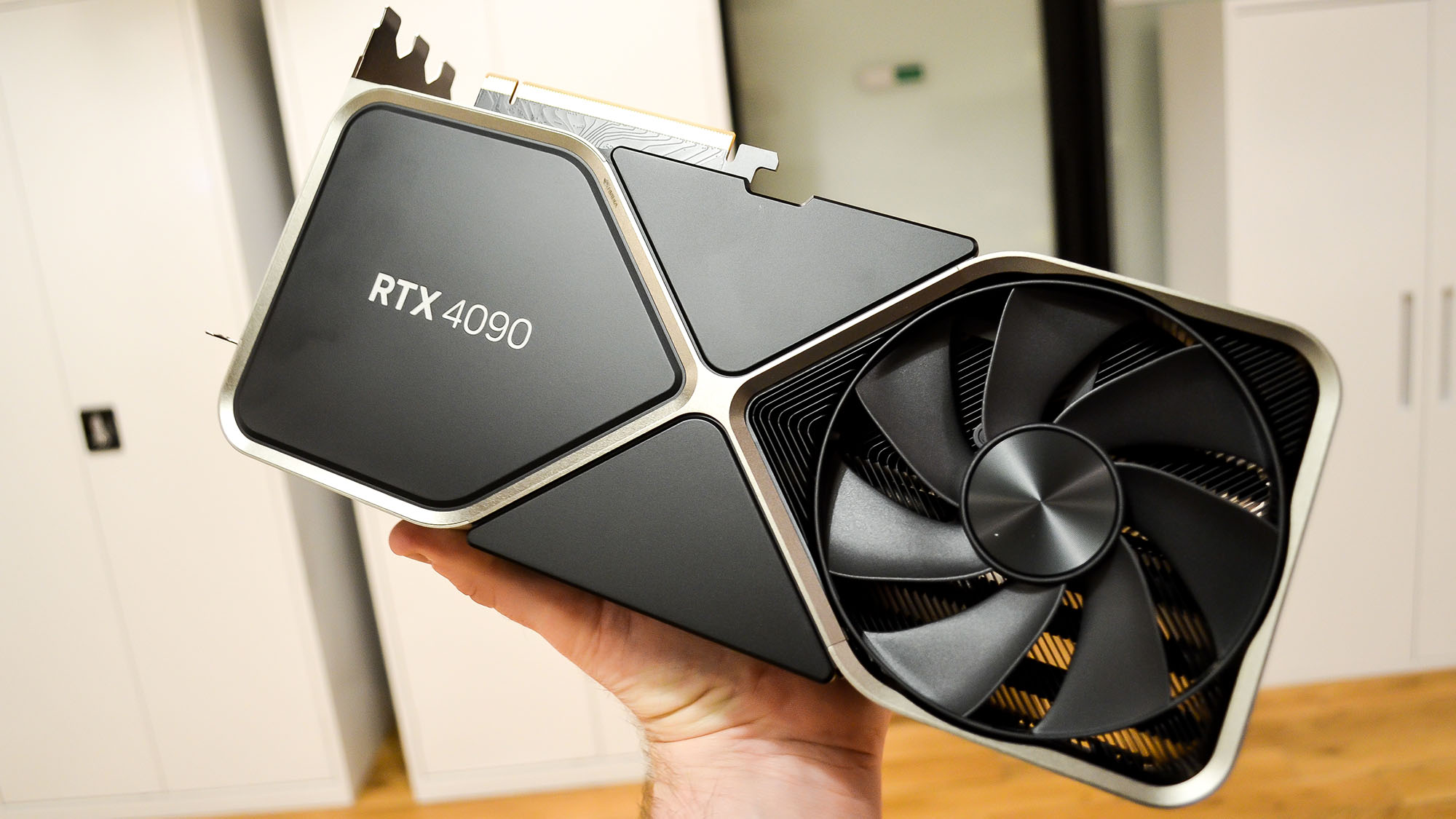I’m suddenly really excited about Nvidia’s new RTX 5090 – but probably not for the reason you’re expecting
Two-slot is back, baby!

This week’s Nvidia RTX 5000 reveal at CES 2025 in Las Vegas was a pretty mixed bag for me. On the one hand, the generational price drop on the new RTX 5070 was an extremely welcome sight, as was the backward compatibility for DLSS 4 across all RTX cards. On the other hand, the RTX 5090 costs 2,000 bucks, and Nvidia’s new Multi Frame Generation tech – while impressive – will be exclusive to next-gen GPUs.
Still, there was one footnote to Nvidia’s slate of CES reveals that really piqued my interest: a renewed commitment to its SFF-Ready scheme. This program has actually been floating around for a while - it was a small part of the Nvidia press presentation I attended at Computex last year - but I hadn’t really paid it much heed up till this point.
Why? Well, as much as I love compact PCs, Nvidia’s SFF (Small Form Factor) program felt a bit half-assed at the time. The scheme determined key specifications for other industry bodies – primarily third-party GPU makers and case manufacturers – to follow, creating a sort of certification that assures users that their chosen graphics card will fit inside whatever compact case they buy.

It was a good idea in theory, but there wasn’t much an experienced PC-builder couldn’t reasonably extrapolate – most of the current-gen cards supported were twin-fan RTX 4070 and 4070 Ti models, with a small handful of third-party 4080 cards. The only supported first-party FE (Founders Edition) cards from Nvidia were the 4070 and 4070 Super – if you ever saw an RTX 4090 FE in person, you’d understand perfectly that there was zero chance that ultra-chunky GPU would fit inside an SFF case.
But with the RTX 5000 series, that’s all about to change.
Small is the new big
Yes, the RTX 5090 FE is much smaller than its predecessor – despite being an absolute monster of a GPU in performance (and price) terms, the Founders Edition of Team Green’s new flagship graphics card returns to a two-slot configuration and measures 137 x 304 x 40mm - just about small enough to fit within Nvidia’s SFF-Ready size limits.
The list of viable third-party cards is also longer and more inclusive than it was for the RTX 4000 generation (you can view the list on Nvidia’s website), with almost every third-party manufacturer offering at least one RTX 5080 variant that can fit inside a compact PC case. It appears that the only 5090 that qualifies is the FE version, but that’s still a significant improvement considering that even the RTX 4080 FE was too large.

As console performance improves with the likes of the PS5 Pro and the inexorable march of PC gaming handhelds continues, there’s a rising demand for ‘living room PCs’ – the sort of compact system that can fit comfortably in your TV stand and be used for gaming with a traditional gamepad. The renewed inclusivity of the SFF-Ready scheme is a step in the right direction here.
While I might still balk a little at the price tag (sorry Nvidia, $2,000 is practically into professional-grade hardware territory), there’s no denying that the RTX 5090 would make for an absolute beast of a living room gaming machine. Hell, even the RTX 5070 should outperform any currently available console with the help of DLSS 4. OK, article over, I need to get on the phone with Nvidia right now.
You might also like...
Get daily insight, inspiration and deals in your inbox
Sign up for breaking news, reviews, opinion, top tech deals, and more.

Christian is TechRadar’s UK-based Computing Editor. He came to us from Maximum PC magazine, where he fell in love with computer hardware and building PCs. He was a regular fixture amongst our freelance review team before making the jump to TechRadar, and can usually be found drooling over the latest high-end graphics card or gaming laptop before looking at his bank account balance and crying.
Christian is a keen campaigner for LGBTQ+ rights and the owner of a charming rescue dog named Lucy, having adopted her after he beat cancer in 2021. She keeps him fit and healthy through a combination of face-licking and long walks, and only occasionally barks at him to demand treats when he’s trying to work from home.